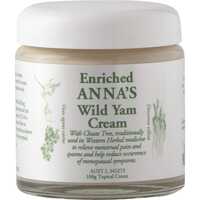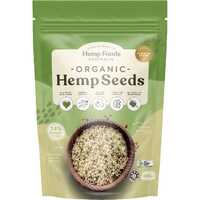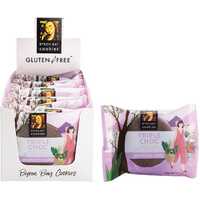The human diet is constantly evolving due to changes in food production and scientific knowledge. Over the last few decades, gluten-free diets have become increasingly popular across the western world. A gluten-free diet excludes all foods containing gluten, a common protein found in wheat, rye, barley, and oats. People avoid gluten for many reasons, with some people needing to manage specific medical conditions and others wanting to avoid food sensitivities and boost health outcomes.
Along with managing medical issues and food intolerance, gluten-free diets are thought to provide specific health advantages. While gut health and other benefits can be over-hyped, the growing popularity of gluten-free living is far from a fad. From empty carbohydrates to mass-produced and overly processed foods, avoiding or reducing gluten-containing foods can be a powerful way to improve your diet.
Let's take a long, hard look at gluten, from the problems and benefits associated with this substance to the huge variety of gluten-free foods that you can enjoy.
What is Gluten?
Gluten is a common structural protein found in numerous cereal grains. Technically, gluten only refers to wheat proteins, but in medical papers, it also refers to prolamin and glutelin combinations. From wheat and rye to barley, durum, spelt, emmer, and triticale, gluten has been consumed by humans for thousands of years. Gluten is found in most bread products, and it's also common in cereals, cooking ingredients, cakes, biscuits, pasta, noodles, condiments, meats, and imitation meat products. Gluten is also found in many drinks, especially beer, milk-powder drinks, and coffee substitutes.
Why do People Avoid Gluten?
Gluten triggers a variety of adverse reactions in some individuals, including a number of inflammatory, immunological, and autoimmune responses. Medical conditions associated with gluten include coeliac disease, gluten ataxia, dermatitis herpetiformis, and wheat allergy. Gluten sensitivity is known to cause certain neurological disorders, including epilepsy, vascular dementia, and headache. It can also cause movement disorders such as parkinsonism and Tourette syndrome.
There are three main groups of people who follow a gluten-free diet: people diagnosed with coeliac disease and other gluten-related medical conditions, people with non-celiac gluten sensitivity (NCGS), and people seeking specific health benefits by avoiding or reducing their gluten intake.
What is coeliac disease?
Following a lifelong gluten-free diet is the only way to treat coeliac disease. This condition occurs when the immune system reacts abnormally to gluten. This autoimmune disease affects roughly 1% of the population, and for these people, even small amounts of gluten can cause significant damage. When people with coeliac disease ingest gluten-containing proteins, the lining of their small intestine becomes inflamed and prevents the proper absorption of nutrients. Inflammation can also occur elsewhere in the body, with systemic effects responsible for organ damage and many other symptoms.
What is gluten intolerance?
Along with coeliac disease, many people experience symptoms associated with gluten intolerance. NCGS and wheat allergy are two well-recognised medical conditions, although people with the latter can safely consume other gluten-containing grains such as rye or barley. While gluten intolerance is far less severe than coeliac disease, it has been associated with a range of adverse physical and mental symptoms. Common symptoms of NCGS include:
- Bloating and wind
- Diarrhea
- Constipation
- Joint pain
- Neuropathy
- Fatigue
- Stomach pain
- Nausea
- Headache
- Mental fog
- Depression
- Anxiety
There is no precise way to test for NCGS, with this diagnosis typically made through exclusion. Gluten intolerance is definitely on the rise, however, with gluten sensitivity four times higher today than it was 50 years ago. Two to three times as many women than men suffer from coeliac disease, and up to six times as many women suffer from NCGS. While no one knows the exact reason for these growing numbers, the mass-produced commercial food industry may be partly to blame.
Avoiding gluten for health reasons
Over the last few years, a third type of gluten-free diet has emerged. Individuals following this diet don't have coeliac disease, and they're also free of specific gluten sensitivities. Instead, as the symptoms of gluten intolerance become more established in the medical community, more people are choosing to avoid or limit gluten as a proactive health measure. Gluten-free bread, cakes, and pasta are increasingly popular around the world, as health-conscious consumers look to prevent gluten sensitivities and avoid heavily processed grain products.
Why Are Gluten-Free Diets on The Rise?
While gluten-related medical conditions are very real, some people write off the wider gluten-free movement as an exercise in modern mass neurosis. After all, we were eating gluten-containing grains for thousands of years before people started developing problems. However, while the bread and cereals of today may look similar to those produced in the dark ages, they're actually very different. Due to industrial mass-scale baking methods, we're exposed to higher levels of stronger gluten than ever before. Modern bread is light, fluffy, and delicious, but it may come at a cost.
So what has changed?
When it comes to gluten-containing foods, a lot has changed over the centuries. In fact, some of the biggest developments have taken place over the last few decades. From pesticides and additives to undisclosed processing enzymes, many of the compounds used in food production are known to cause digestive issues and food sensitivities. While all commercial foods are recognised as "safe", there are issues associated with many modern food ingredients and additives.
Potential problems start early, with unwanted compounds possibly entering the food chain before grains are even harvested. For example, it's common practice for farmers to spray their wheat just days before harvest with glyphosate. This pesticide helps to dry wheat crops before processing, but it remains highly controversial. According to The International Agency for Research on Cancer, this incredibly common pesticide is a probable human carcinogen.
In addition, a wide range of additives and processing aids merge with gluten on the factory floor, including a number of enzymes synthesized in laboratory environments. No less than 27 potential allergens have been identified in modern wheat products, and along with emulsifiers, they may promote intestinal inflammation and affect the gut microbiome. Other common cereal additives include xanthan gum and hydroxypropyl methylcellulose. The former is used in the oil industry and the latter is used in construction.
Over the last few decades, new food production methods have been developed in an attempt to speed up baking, increase shelf life, and boost profit margins. Bakers and food producers continue to add extra gluten, and this "vital gluten" is often labelled as "wheat protein" on food packets. Yeast levels have also been boosted, as traditional methods of slow fermentation are replaced by hurried modern methods using non-nutritious wheat strains. While gluten itself doesn't always cause problems, there are lots of reasons to avoid processed gluten-heavy food products.
What Are The Benefits of Gluten?
Modern bread and grains are often compromised, but gluten is not always to blame. For many people, bloating and other symptoms are reduced when they consume ancient grains or products that use traditional baking techniques. Studies have linked whole grain consumption with a range of improved health outcomes, including significantly lower rates of heart disease and stroke, reduced development of type 2 diabetes, and reduced deaths from all causes.
How to Avoid or Substitute Gluten in Your Diet
If you want to avoid or limit your gluten intake, there are lots of great options available. While it can be difficult saying "no" to some breads and cakes, there are lots of great alternatives on the market. Modern supermarkets and health foods stores are well-stocked with delicious healthy foods, and some of them are 100% gluten-free:
- Meat products
- Dairy products
- Fruits and vegetables
- Nuts, seeds, and dry fruit
- Gluten-free bread
- Gluten-free cereals
- Gluten-free pasta and noodles
If you want to enjoy naturally gluten-free cereal products, there are lots of fantastic wheat alternatives on the market. While the western world is saturated with wheat flour and processed wheat products, the following grains are a great healthy option:
- Buckwheat
- Chickpea flour
- Coconut flour
- Cornflour
- Lentil flour
- Polenta
- Psyllium
- Quinoa
- Rice
- Rice bran
- Soy flour
- Tapioca
When it comes to labelling on packaged foods, there are a few ways to identify gluten-free products. In Australia, all ingredients and food additives derived from wheat, rye, barley, or oats must be declared in the ingredients list. Gluten must be declared as 'contains gluten' when present, and there's also a separate Australian Food Standard for processed foods labelled 'gluten-free'. Along with standard food labelling, some foods also carry the Coeliac Australia Endorsement logo.
If you're looking for a great selection of gluten-free foods, Healthy Being has everything you need. We have a huge variety of gluten-free cooking products, bread mixes, herbal teas, and drink powders, along with supplements, condiments, confectionery, and more. If you want to avoid or limit your gluten intake and live your best possible life, check out our website today and enjoy free shipping options across Australia and worldwide delivery!


 Certified Organic
Certified Organic Vegan Friendly
Vegan Friendly  Vegetarian
Vegetarian Organic Ingredients
Organic Ingredients Dairy Free
Dairy Free Gluten Free
Gluten Free Keto Friendly
Keto Friendly
































